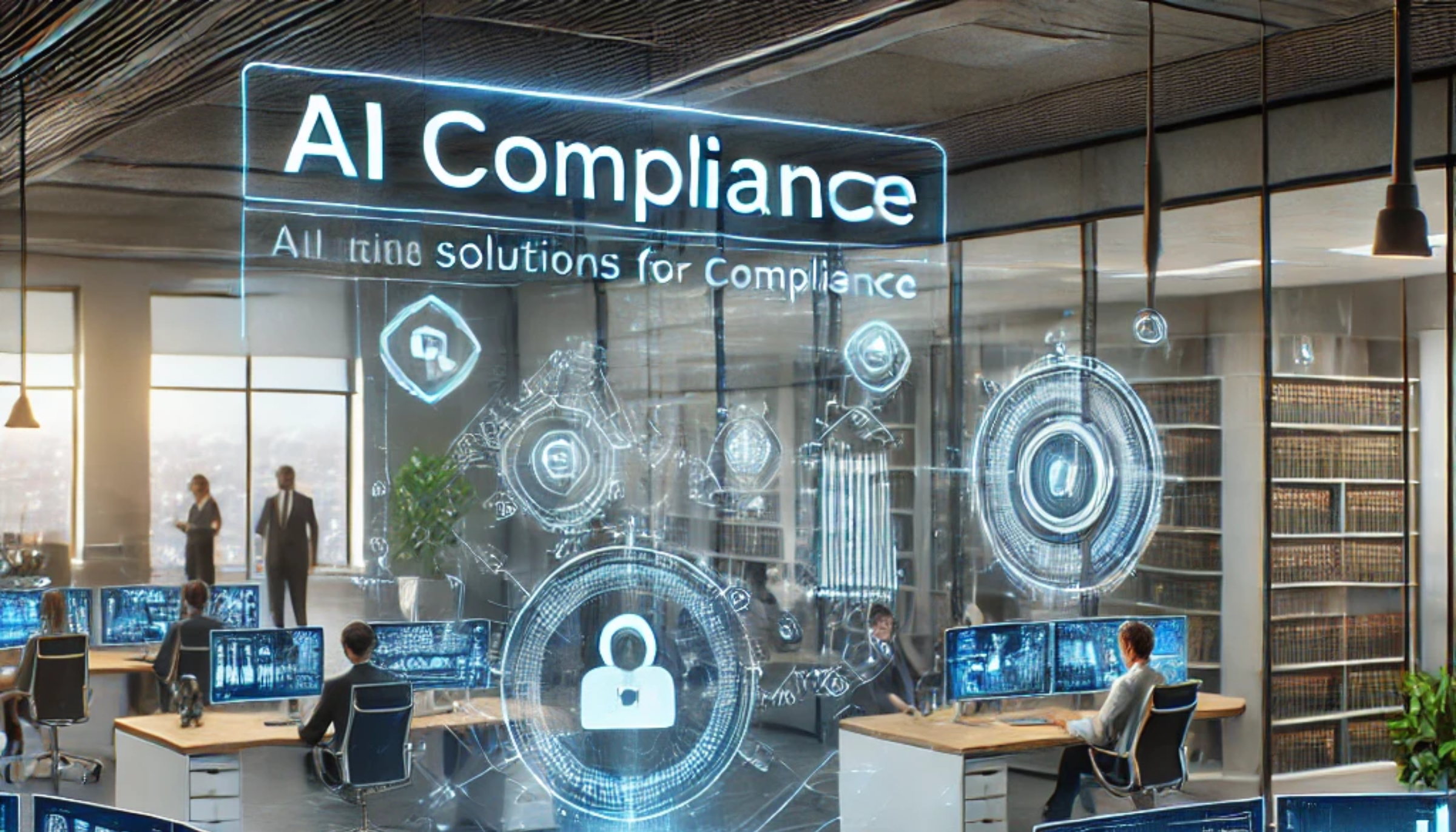In today’s fast-paced global economy, businesses face an intricate landscape of regulatory requirements that vary significantly across regions. The phrase “Think Global, Act Local” encapsulates the need for organizations to adopt a global perspective while tailoring their compliance strategies to local regulations. This is where Artificial Intelligence (AI) comes into play, offering innovative solutions to streamline complex compliance processes.
Key Takeaways
- AI automates compliance processes, significantly reducing the time and effort required for monitoring and reporting.
- Utilizing predictive analytics, AI helps organizations anticipate compliance issues before they arise, allowing for proactive adjustments.
- AI streamlines data management, ensuring accurate and accessible compliance-related information across the organization.
- NLP technology enables automated analysis of regulatory documents, enhancing accuracy and compliance adherence.
- While AI can enhance compliance efforts, human oversight remains crucial for interpreting complex regulations and making informed decisions.

Understanding Compliance Challenges
Compliance management is a multifaceted challenge that encompasses various regulations, from financial reporting standards to data protection laws. Organizations often struggle with:
- Diverse Regulations: Different countries have unique legal frameworks, making it difficult for multinational companies to maintain compliance.
- Volume of Data: The sheer volume of data that organizations must process can overwhelm traditional compliance systems.
- Dynamic Regulations: Regulatory environments are constantly evolving, requiring businesses to stay updated and adapt quickly.
These challenges necessitate a more sophisticated approach to compliance management, one that can leverage technology to enhance efficiency and accuracy.
The Role of AI in Compliance
AI technologies offer powerful tools for addressing compliance challenges. Here are several ways AI can enhance compliance management:
1. Automated Monitoring and Reporting
AI can automate the monitoring of compliance obligations, ensuring that organizations remain compliant with local regulations. By utilizing machine learning algorithms, AI systems can analyze vast amounts of data in real-time, identifying potential compliance risks and generating reports without human intervention. This not only saves time but also reduces the likelihood of human error.
2. Predictive Analytics
Predictive analytics powered by AI can help organizations anticipate compliance issues before they arise. By analyzing historical data and identifying patterns, AI can provide insights into potential regulatory changes and their impacts. This proactive approach allows companies to adjust their compliance strategies accordingly, minimizing risks and costs associated with non-compliance.
3. Enhanced Data Management
AI solutions can streamline data management processes, making it easier for organizations to collect, store, and analyze compliance-related data. Intelligent data processing tools can categorize and tag data automatically, ensuring that relevant information is easily accessible when needed. This capability is particularly beneficial in industries like finance and healthcare, where data accuracy is critical.
4. Natural Language Processing (NLP)
Natural Language Processing (NLP) enables AI systems to understand and interpret legal texts, regulations, and compliance documents. By employing NLP, organizations can automate the review of compliance documents, ensuring that they meet regulatory standards. This technology can also be used to analyze customer communications and identify potential compliance breaches.
5. Risk Assessment and Management
AI can enhance risk assessment processes by evaluating various factors that contribute to compliance risks. Machine learning models can analyze data from multiple sources, such as transaction records and employee behavior, to identify potential areas of concern. This allows organizations to prioritize their compliance efforts and allocate resources more effectively.
 Case Studies: AI in Action
Case Studies: AI in Action
Case Study 1: Financial Services
A leading financial institution implemented an AI-driven compliance management system that automated the monitoring of transactions for suspicious activities. By leveraging machine learning algorithms, the system was able to detect anomalies in real-time, significantly reducing the time required for manual reviews. As a result, the institution improved its compliance rates and reduced the risk of regulatory penalties.
Case Study 2: Healthcare
In the healthcare sector, a major hospital network utilized AI to streamline its compliance with HIPAA regulations. By employing NLP technology, the network was able to analyze patient communications and identify potential breaches of confidentiality. This proactive approach not only ensured compliance but also enhanced patient trust and satisfaction.
 Implementing AI Solutions for Compliance
Implementing AI Solutions for Compliance
To successfully implement AI solutions for compliance, organizations should consider the following steps:
- Assess Current Compliance Processes: Identify areas where AI can add value and streamline existing processes.
- Choose the Right AI Tools: Select AI technologies that align with the organization’s specific compliance needs and regulatory environment.
- Train Employees: Provide training to employees on how to use AI tools effectively and understand their implications for compliance.
- Monitor and Adjust: Continuously monitor the performance of AI solutions and make adjustments as needed to ensure ongoing compliance.
Conclusion
As businesses navigate the complexities of global compliance, adopting AI solutions can provide a significant competitive advantage. By thinking globally and acting locally, organizations can tailor their compliance strategies to meet diverse regulatory requirements while leveraging the power of AI to enhance efficiency and accuracy. Embracing these technologies not only ensures compliance but also fosters a culture of innovation and trust within the organization.
For further insights into AI solutions for compliance management, consider exploring resources from industry leaders such as Certa and IBM, which provide valuable information on the latest AI tools and best practices in regulatory compliance.
FAQs
1. What is AI in compliance management?
AI in compliance management refers to the use of artificial intelligence technologies to automate, streamline, and enhance the processes involved in ensuring that organizations adhere to regulatory requirements.
2. How can AI help with compliance challenges?
AI can assist with compliance challenges by automating monitoring and reporting, providing predictive analytics, improving data management, utilizing natural language processing (NLP) for document analysis, and enhancing risk assessment and management.
3. What types of industries benefit from AI compliance solutions?
Industries such as finance, healthcare, manufacturing, and retail particularly benefit from AI compliance solutions due to their complex regulatory environments and the need for accurate data management.
4. Are AI compliance tools expensive to implement?
The cost of implementing AI compliance tools can vary widely depending on the complexity of the solution and the size of the organization. However, many companies find that the long-term savings and efficiency gains outweigh the initial investment.
5. What should organizations consider before implementing AI for compliance?
Organizations should assess their current compliance processes, identify specific needs, choose the right AI tools, ensure employee training, and establish a system for ongoing monitoring and adjustment.
6. Can AI completely replace human compliance officers?
While AI can significantly enhance compliance processes, it is not designed to completely replace human compliance officers. Human oversight is still essential for interpreting complex regulations and making nuanced decisions.
7. How does AI ensure data privacy and security in compliance?
AI solutions can include advanced security measures to protect sensitive data. Organizations must also ensure that their AI tools comply with data protection regulations, such as GDPR or HIPAA, to maintain data privacy.
8. What are some examples of AI tools for compliance?
Examples of AI tools for compliance include automated monitoring systems, predictive analytics platforms, NLP software for document analysis, and risk management solutions that leverage machine learning.
9. How can organizations measure the effectiveness of AI compliance solutions?
Organizations can measure effectiveness through key performance indicators (KPIs) such as reduction in compliance violations, time saved in compliance reporting, and improved accuracy in data management.
10. Where can I find more information about AI compliance solutions?
For more information, resources from industry leaders like Certa, IBM, and Compliance.ai provide valuable insights into the latest AI tools and best practices in regulatory compliance.


 Case Studies: AI in Action
Case Studies: AI in Action Implementing AI Solutions for Compliance
Implementing AI Solutions for Compliance




